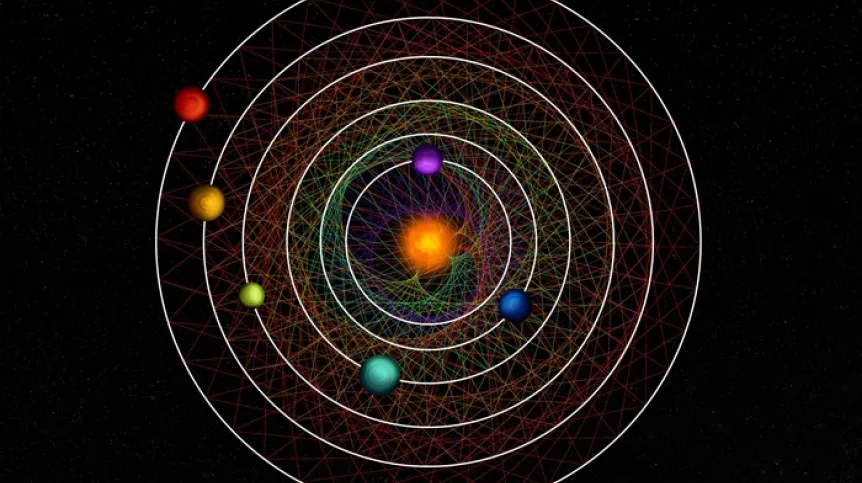
The European CHaracterising ExOPlanet Satellite (Cheops) has detected an unusual system with six planets that has remained unchanged since its formation billions of years ago.
The research, the results of which were published in Nature, involved scientists from Chile, Mexico, France, Germany, Italy, Portugal, Spain, Sweden, Switzerland, the UK, the US and from Poland: from the Institute of Astronomy at the Faculty of Physics, Astronomy and Informatics of the Nicolaus Copernicus University in Toruń.
The discovery, made by the CHaracterising ExOPlanet Satellite (Cheops), concerns the star HD110067 located 100 light-years away in the northern constellation of Coma Berenices.
AEexperts from the European Space Agency (ESA) remind that in 2020, NASA’s Transiting Exoplanet Survey Satellite (TESS) detected dips in the star’s brightness that indicated planets were passing in front of the star's surface. A preliminary analysis revealed two possible planets, although much of the data did not make sense.
'That’s when we decided to use Cheops. We went fishing for signals among all the potential periods that those planets could have,’ says Rafael Luque of the University of Chicago.

The researcher and his team discovered a third planet. In addition, it became clear that the three planets were in an orbital resonance. In practice, this means that the closest planet to the star completes a full orbit in just over nine days, the next one - in over 13.7 days (about 1.5 times longer), and the next one - 20.5 days (also about 1.5 times longer than the previous one).
When scientists took this resonance into account in the analysis of further, difficult to explain data, it turned out that there were a total of six planets in resonance orbiting the star.
The discovery of the resonance system is of particular importance. The thing is that planetary systems often start their lives in a resonant form, but it is easily disrupted over time.
'It shows us the pristine configuration of a planetary system that has survived untouched. Cheops gave us this resonant configuration that allowed us to predict all the other periods. Without that detection from Cheops, it would have been impossible
'As our science team puts it: Cheops is making outstanding discoveries sound ordinary. Out of only three known six-planet resonant systems, this is now the second one found by Cheops, and in only three years of operations,’ says Maximilian Günther, ESA project scientist for Cheops.
HD110067 is the second planetary system in orbital resonance that Cheops has helped reveal. The first one is called TOI-178. (PAP)
Marek Matacz
mat/ zan/ kap/
tr. RL













